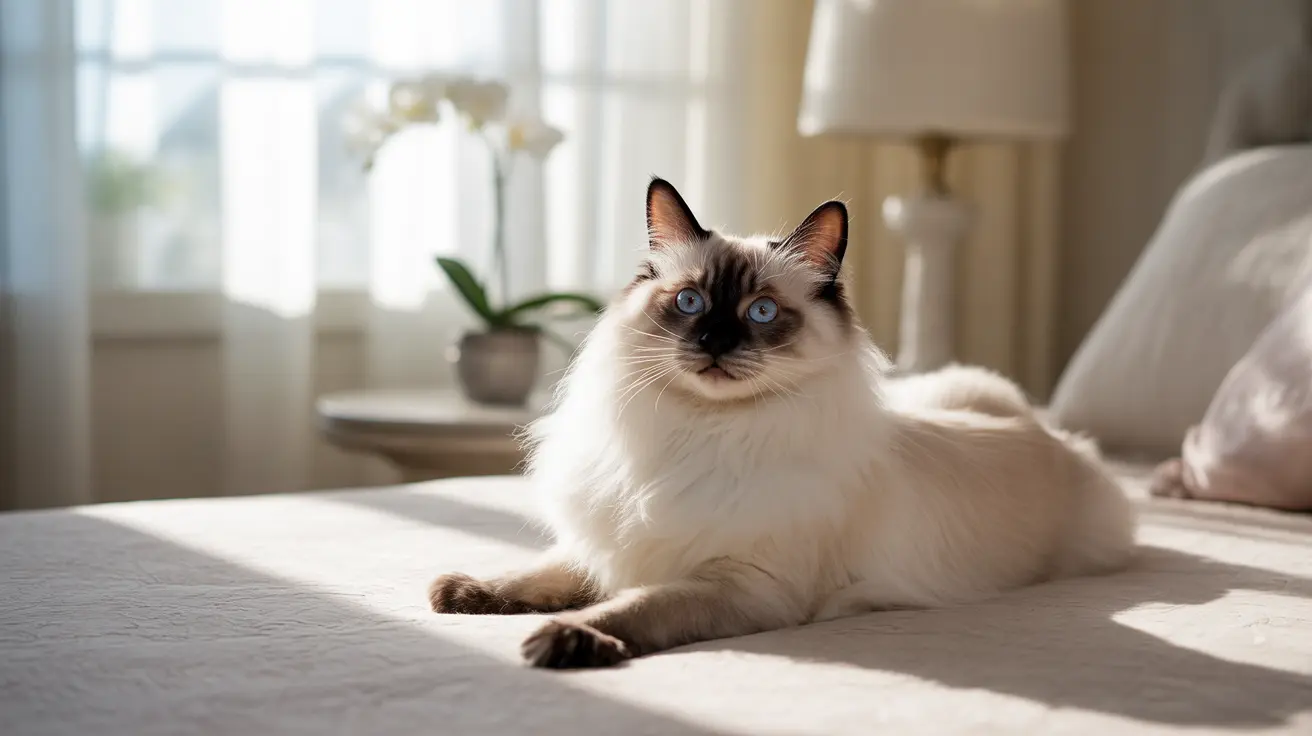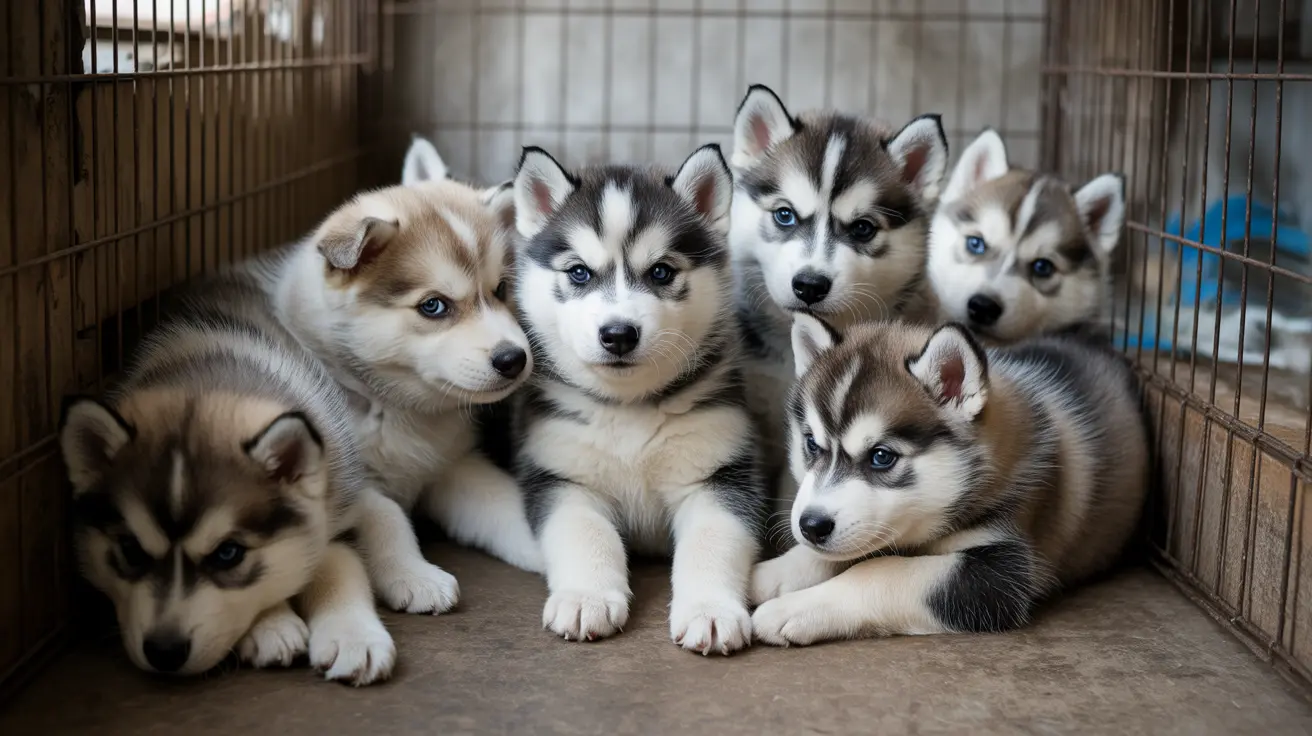Balinese cats are among the most elegant and visually striking breeds in the feline world, known for their stunning pointed coats and mesmerizing blue eyes. Understanding Balinese cat colors is essential for both enthusiasts and potential owners, as these graceful felines come in a fascinating array of color variations, each with its own unique characteristics and genetic background.
In this comprehensive guide, we'll explore the full spectrum of Balinese cat colors, from traditional point patterns to rare variations, and delve into the fascinating genetics that create these beautiful coat colors.
Traditional Point Colors in Balinese Cats
The foundation of Balinese cat colors consists of four classic point variations:
Seal Point
The most traditional and widely recognized color pattern features deep brown to nearly black points contrasting against a cream or ivory body. Seal points are characterized by their rich, dark extremities and warm-toned body color.
Blue Point
A dilute version of the seal point, blue points display soft, gray-blue markings on their extremities with a cool-toned, bluish-white body. These cats often have slate-colored nose leather and paw pads.
Chocolate Point
Distinguished by their milk-chocolate colored points and ivory body, chocolate points show a warmer, lighter brown compared to seal points. Their nose leather and paw pads typically have a cinnamon-pink color.
Lilac Point
The most delicate of the traditional colors, lilac points exhibit frosty gray points with pink undertones and an ice-white body. These rare beauties have pink-tinted nose leather and paw pads.
Advanced Color Variations and Patterns
Lynx Points
Lynx (or tabby) points feature distinctive striping in their point colors, including the characteristic "M" marking on their foreheads. These patterns can occur in any of the base colors.
Red and Cream Points
Though not recognized by all registries as Balinese (some classify them as Javanese), these warm-toned variations feature orange-red or cream-colored points against a white body.
Tortie Points
These striking cats display a mixture of colors in their points, typically combining red or cream with another base color. This pattern is almost exclusively found in females due to genetic factors.
The Science Behind Color Development
Balinese kittens are born completely white, with their point colors developing gradually over several weeks. This fascinating process is controlled by temperature-sensitive enzymes that affect pigment production, causing darker coloration in the cooler areas of the body (extremities) while leaving the warmer core lighter.
Environmental factors can influence the intensity of point colors, with cats living in cooler climates often developing darker, more distinct points than those in warmer regions.
Breed Standards and Recognition
While most cat associations recognize a wide range of Balinese colors, the Cat Fanciers' Association (CFA) maintains stricter standards, accepting only the four traditional colors - seal, blue, chocolate, and lilac. Other color variations are often classified separately as Javanese cats.
Care Considerations for Different Color Points
Although coat color doesn't affect personality or care requirements, owners should be aware that lighter-pointed Balinese cats may show dirt more easily and might require more frequent grooming to maintain their pristine appearance. Regular brushing helps maintain the signature silky coat regardless of color.
Frequently Asked Questions
What are the different recognized color points in Balinese cats and how do they differ?
Balinese cats come in four traditional colors: seal (dark brown), blue (gray-blue), chocolate (milk-chocolate brown), and lilac (frost-gray with pink tones). Each color has distinct point markings against a lighter body, with variations in nose leather and paw pad colors.
How does the temperature-sensitive gene affect the point coloration of Balinese cats?
The temperature-sensitive enzyme in the color-point gene produces darker pigmentation in cooler areas of the body (face, ears, legs, and tail) while restricting color in warmer areas, creating the characteristic pointed pattern.
Why are Balinese kittens born white and when do their color points start to appear?
Balinese kittens are born white due to the temperature-sensitive nature of their color genes. Point colors begin developing at around 1-2 weeks of age and continue to darken and develop over several months.
What is the difference between Balinese and Javanese cat colors according to cat registries?
The CFA classifies only seal, blue, chocolate, and lilac points as Balinese, while other colors like red, cream, and tortie points are categorized as Javanese. However, other registries may recognize all these colors as Balinese.
How do genetics influence rare Balinese cat colors like lilac, red, cream, and tortie?
These colors are created by various genetic factors: lilac results from a combination of dilution genes affecting chocolate points, red and cream are linked to sex-linked genes, and tortie patterns occur when a cat inherits both red and another color gene on their X chromosomes.






